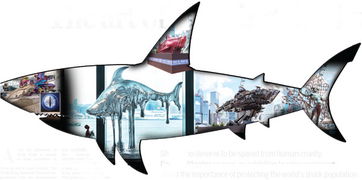Content:

When it comes to fishing at the bottom of a bridge, especially for catching carp, it requires a blend of patience, skill, and a deep understanding of the water's dynamics. Carp are known for their resilience and intelligence, making them a challenging yet rewarding catch. In this article, we will delve into the intricacies of fishing for carp at the bottom of a bridge and provide you with essential techniques to improve your chances of success.
Understanding the Bridge Environment
Before we dive into the fishing techniques, it's crucial to understand the unique environment of a bridge. The area beneath a bridge is often characterized by strong currents, varying depths, and a complex structure with numerous nooks and crannies. Carp are attracted to these areas for several reasons:
- Shelter: The bridge offers natural cover from predators and harsh weather conditions.
- Food Source: The area beneath the bridge can accumulate a variety of food, including insects, fish, and organic matter.
- Water Flow: Carp are known to thrive in areas with strong currents, as it helps them with digestion and oxygenation.
Choosing the Right Equipment
The equipment you choose can significantly impact your success. Here are some key considerations:
Rod and Reel: A medium-heavy action rod with a sensitive tip is ideal for detecting subtle bites. A quality spinning reel with a smooth drag system is essential for handling the strong currents and heavy carp.
Line: Use a strong, abrasion-resistant line, such as braid or fluoro-carbon, to withstand the currents and potential snags.
Hook: A size 6 to 10 hook is typically sufficient for carp. Ensure the hook is sharp and well-suited for the bait you plan to use.
Bait: Carp are opportunistic feeders and will take a variety of baits. Popular options include boilies, pellets, corn, and bread.
Positioning Your Rig
Proper rigging is crucial for success. Here are some tips:
Depth: Carp often feed near the bottom, so your bait should be positioned close to the riverbed. Adjust your rigging to achieve this depth.
Current: The direction and strength of the current will affect your rigging. If the current is strong, consider using a slip bobber or a heavy sinker to keep your bait in place.
Anchor: Use a strong anchor or weight to prevent your rig from being swept away by the current.
Leader Length: A leader of 1 to 2 meters (3 to 6 feet) is often sufficient. This allows your bait to move naturally while still being close enough to the bottom.
Baiting Techniques
The way you present your bait can make a significant difference in your success rate. Here are some effective baiting techniques:
Boilies: Boilies are a popular choice for carp. You can fish them on the bottom or add a little weight to suspend them just above the riverbed. Ensure the bait is well-presented and not too tightly packed on the hook.
Pellets: Pellets are another excellent option. They can be fished on the bottom or suspended just above it. Be sure to use a good quality pellet that is suitable for carp.
Corn: Corn is a classic bait for carp. It can be fished on the bottom or suspended using a float. The key is to ensure the corn is fresh and free from mold.
Bread: Bread is a versatile bait that can be used in various ways. You can fish it on the bottom, suspended, or even as a paste. The key is to ensure the bread is fresh and not too dense.
Reading the Water
Understanding the water's behavior is essential for successful carp fishing. Here are some tips:
Current: Observe the current's direction and strength. This will help you determine the best rigging and baiting techniques.
Structure: Look for areas with different depths, currents, and structures. These areas are often hotspots for carp.
Weather: Pay attention to the weather conditions. Carp are often more active on overcast days or during the cooler parts of the day.
Handling and Care
Once you've caught a carp, it's important to handle it with care:
Net: Use a soft, mesh net to avoid damaging the fish's scales and slime coat.
Landing: Keep the fish in the water as much as possible and handle it gently to avoid stress.
Release: If you plan to release the carp, ensure it is healthy and has a good chance of survival.
Conclusion
Fishing for carp at the bottom of a bridge can be a challenging but highly rewarding experience. By understanding the unique environment, choosing the right equipment, and employing effective techniques, you can increase your chances of success. Remember to always fish responsibly and respect the environment and the fish you are targeting. With patience and practice, you'll soon become a master of catching carp at the bottom of a bridge.












